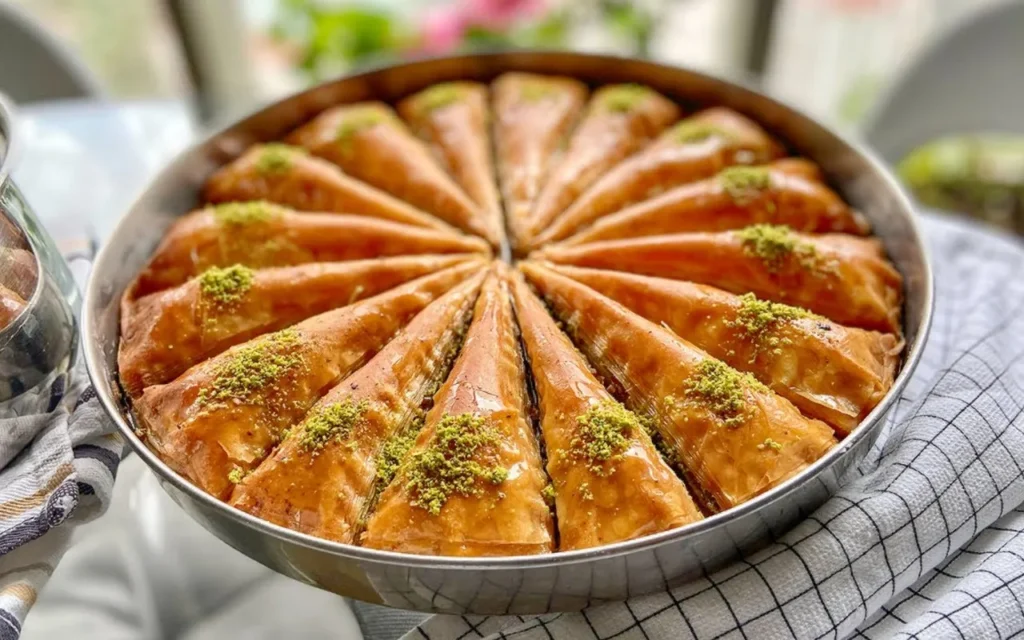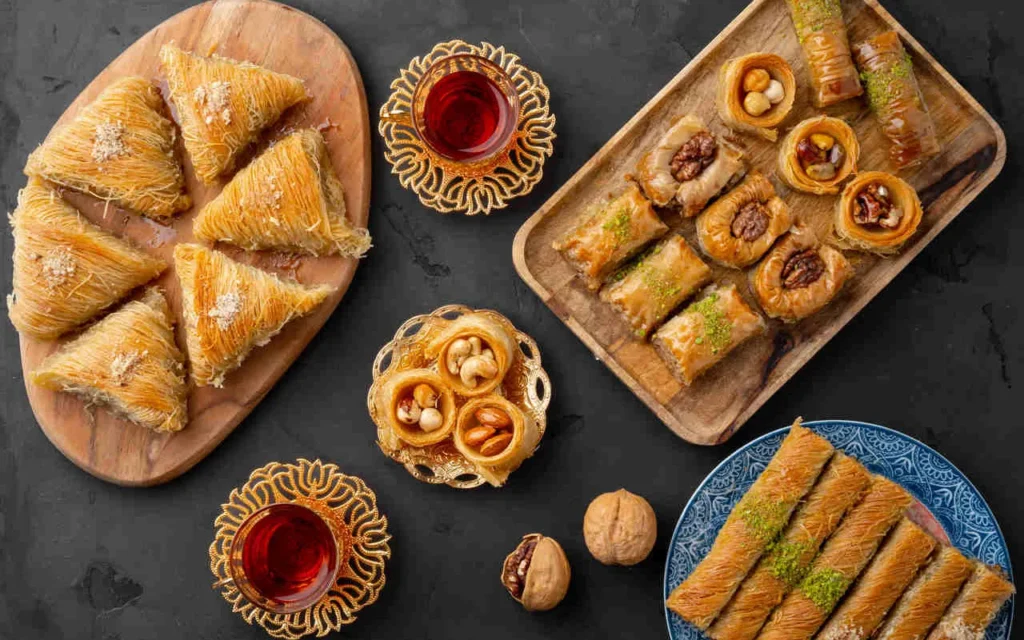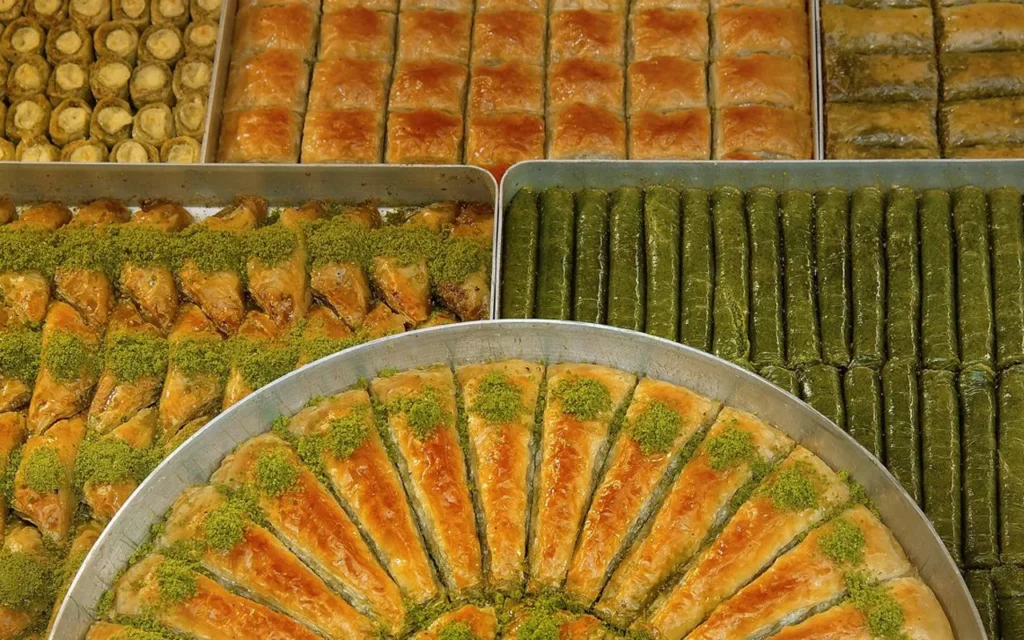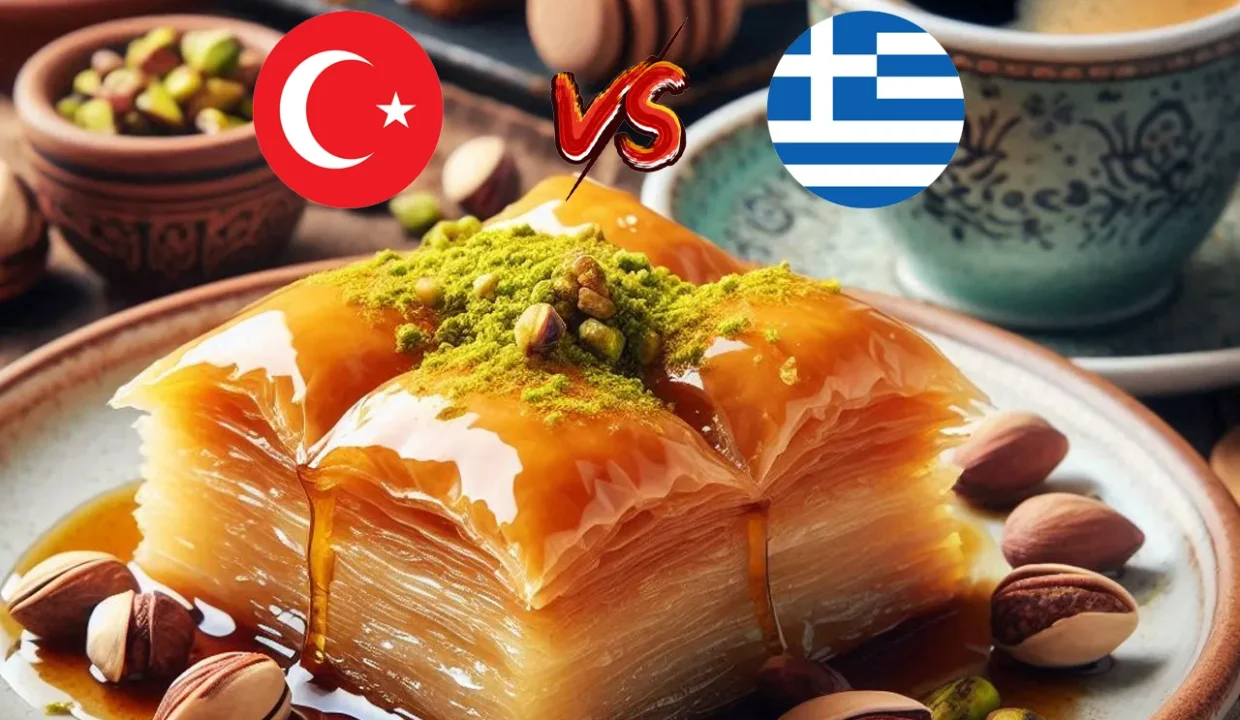Greek vs Turkish Baklava: A Delicious Comparison
Baklava is a beloved dessert with a rich history and deep cultural significance in both Greece and Turkey. This sweet, flaky pastry, made with layers of thin dough, nuts, and honey or syrup, is enjoyed by many around the world. Despite their similarities, Greek and Turkish baklava have distinct differences that reflect their unique culinary traditions. This article explores the nuances between Greek and Turkish baklava, delving into their origins, preparation methods, flavor profiles, and cultural importance.
While Greek and Turkish baklava share a common heritage and similar preparation methods, they each possess unique characteristics that reflect their respective cultures. Turkish baklava is known for its light, crisp texture and balanced sweetness, while Greek baklava is celebrated for its rich, aromatic flavor and robust sweetness. Both versions of baklava play significant roles in their cultures, symbolizing hospitality, tradition, and celebration. Whether you prefer the delicate layers of Turkish baklava or the rich, honeyed sweetness of Greek baklava, both offer a delightful and culturally enriching experience.
Historical Origins

Turkish Baklava
The origins of baklava are often traced back to the Ottoman Empire, where it was a prized delicacy in the imperial kitchens of Topkapi Palace in Istanbul. The exact origins are debated, but it is widely accepted that baklava as we know it today was perfected during the Ottoman period. Turkish baklava became a symbol of opulence and hospitality, often served on special occasions and during celebrations. The meticulous preparation and the use of high-quality ingredients were crucial in making this dessert a luxurious treat.
Greek Baklava
Greek baklava shares its origins with Turkish baklava, given the extensive cultural exchanges during the Byzantine and Ottoman periods. Baklava was introduced to Greece during the Ottoman rule, and the Greeks adopted and adapted the recipe to suit their tastes. Over time, baklava became a staple in Greek cuisine, especially during holidays and festive occasions. Greek baklava is celebrated for its sweet, rich flavors and the intricate layers of dough and nuts that make it a decadent dessert.
Preparation Methods

Turkish Baklava Preparation
Turkish baklava is renowned for its delicate layers of filo dough and the use of a rich, aromatic syrup. The preparation process is intricate and requires precision and skill. Here are the steps to prepare traditional Turkish baklava:
- Ingredients: The main ingredients include thin sheets of filo dough, ground nuts (usually pistachios, walnuts, or a combination), butter, sugar, water, and lemon juice. Some recipes also include rosewater or orange blossom water for added fragrance.
- Layering: The filo dough is layered in a baking tray, with each sheet brushed generously with melted butter. After a few layers, a mixture of ground nuts and sugar is spread evenly. This process is repeated until all the dough and nuts are used.
- Cutting: The assembled baklava is cut into diamond or square shapes before baking to ensure even cooking and to allow the syrup to penetrate each piece.
- Baking: The baklava is baked in a preheated oven until golden brown and crisp.
- Syrup: While the baklava bakes, a syrup is prepared by boiling sugar, water, and lemon juice until thickened. Once the baklava is baked, the hot syrup is poured over the hot baklava, allowing it to soak in and infuse the layers with sweetness.
Greek Baklava Preparation
Greek baklava, while similar in many ways, has its own unique touches. The preparation process emphasizes the use of honey in the syrup, giving it a distinct flavor. Here are the steps to prepare traditional Greek baklava:
- Ingredients: The main ingredients include filo dough, ground nuts (commonly walnuts or almonds), butter, sugar, water, honey, and spices such as cinnamon and cloves.
- Layering: Similar to Turkish baklava, the filo dough is layered in a baking dish, with each sheet brushed with melted butter. A mixture of ground nuts, sugar, and spices is spread between the layers.
- Cutting: The assembled baklava is cut into triangles or diamond shapes before baking.
- Baking: The baklava is baked until the layers are golden and crispy.
- Syrup: A syrup made with sugar, water, honey, and spices is boiled until thick. This syrup is poured over the baked baklava, allowing it to soak in and add a rich, sweet flavor.
Flavor Profiles

Turkish Baklava Flavor
Turkish baklava is known for its light, crisp texture and balanced sweetness. The use of pistachios and the aromatic syrup create a rich yet delicate flavor. The syrup, often infused with lemon juice or rosewater, adds a subtle floral note that enhances the overall taste. Turkish baklava tends to be less sweet than its Greek counterpart, allowing the flavors of the nuts and dough to shine through. The result is a dessert that is rich yet not overpowering, making it a favorite among many.
Greek Baklava Flavor
Greek baklava is celebrated for its rich, sweet, and aromatic flavor. The use of honey in the syrup gives it a distinctive taste and a thicker consistency. The addition of spices such as cinnamon and cloves adds a warm, fragrant note that complements the sweetness of the honey and the nuttiness of the walnuts or almonds. Greek baklava tends to be sweeter and more robust in flavor compared to Turkish baklava, offering a decadent and satisfying dessert experience.
Cultural Significance

Turkish Baklava Culture
In Turkey, baklava is more than just a dessert; it is a symbol of hospitality, celebration, and tradition. It is often served during holidays, special occasions, and family gatherings. Turkish baklava is also a popular gift, especially during religious festivals such as Ramadan and Eid. The preparation of baklava is considered an art form, with each region and family having its own variations and secrets. The meticulous process of making baklava reflects the importance of tradition and the value placed on culinary excellence in Turkish culture.
Greek Baklava Culture
In Greece, baklava holds a special place in the hearts of the people. It is a staple during festive occasions, especially during Christmas, Easter, and weddings. Greek families often have their own cherished recipes, passed down through generations. The making of baklava is a communal activity, with family members gathering to prepare the layers and share stories. Baklava symbolizes togetherness, celebration, and the rich culinary heritage of Greece. It is often served with a cup of strong Greek coffee, enhancing the dessert’s sweetness and creating a perfect balance of flavors.


